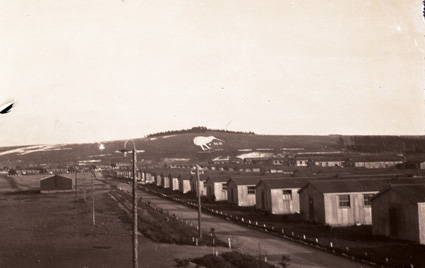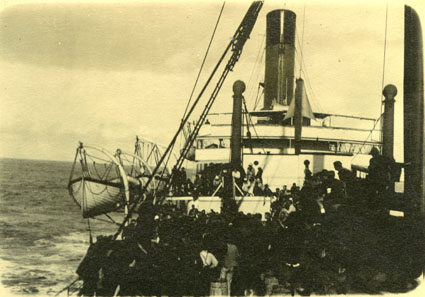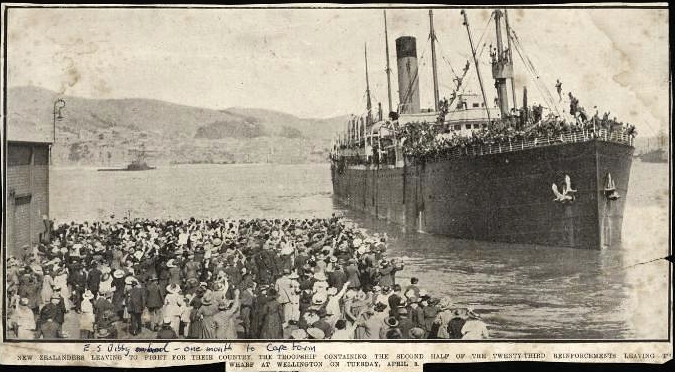By registering with our site you will have full instant access to:
268,000 posts on every subject imaginable contributed by 1000's of members worldwide.
25000 photos and videos mainly relating to the British Merchant Navy.
Members experienced in research to help you find out about friends and relatives who served.
The camaraderie of 1000's of ex Merchant Seamen who use the site for recreation & nostalgia.
Here we are all equal whether ex Deck Boy or Commodore of the Fleet.
A wealth of experience and expertise from all departments spanning 70+ years.
It is simple to register and membership is absolutely free.
N.B. If you are going to be requesting help from one of the forums with finding historical details of a relative
please include as much information as possible to help members assist you. We certainly need full names,
date and place of birth / death where possible plus any other details you have such as discharge book numbers etc.
Please post all questions onto the appropriate forum

-
30th May 2015, 12:37 PM
#1
 Kiwi's on a Wiltshire Hill and the ss Corinthic 1917
Kiwi's on a Wiltshire Hill and the ss Corinthic 1917
Hi Team
A century ago Kiwi's were found all over the world from troopships to a carving on a hill above the Wiltshire town of Bulford.
Regards
Peter Hogg
RNZNA South Canterbury NZ
May 1920 New Zealand troops at Sling Camp, Wiltshire, England riot over delays in their repatriation home. Transport issues and the influenza pandemic meant that the last group of New Zealand soldiers did not arrive home until May 1920.
SLING CAMP
The camp was initially created as an annex to Bulford Camp in 1903; it was originally named "Sling Plantation" after the nearby woods. Soon after the beginning of World War I, New Zealand troops started work on building wooden huts here. They were later joined by Canadian troops, joiners, bricklayers, and civilian workers. The word "Plantation" was then dropped from the title and it simply became Sling Camp. After building was completed, it was said that if each hut were placed end-to-end they would measure 6 miles.
In 1916, the camp was occupied by New Zealand forces and was then known as Anzac Camp by some. It then comprised four main sections: Auckland, Wellington, Otago, and Canterbury Lines. It was officially called the 4th New Zealand Infantry Brigade Reserve Camp, and trained reinforcements and casualties who were regaining fitness.
In 1918, there were 4,300 men at Sling. Soon after the camp suffered large casualties as a result of the Spanish influenza.
The camp also housed some New Zealand conscientious objectors (among them Archibald Baxter and his brothers Alexander and John) who had been forced to join the army and sent all the way from New Zealand to England to make an example of them.
After the end of the war, there were 4600 New Zealand troops stationed at the camp and the camp became a repatriation centre. At that time there was unrest in other camps as a result of delays in demobilising troops. To try to restore order the "spit and polish" regime was enforced and route marches ordered. The men requested a relaxation of discipline as the war was over and they were far from home, however this was refused and the troops rioted, stealing food from the mess and all of the alcohol from the officer’s mess.
In an attempt to resolve the situation, the officers and men were promised no repercussions, but this promise was not honoured; and somewhat ironically the ringleaders were arrested, jailed and immediately shipped back to New Zealand.
To occupy them, the New Zealand soldiers were put to work carving the shape of a large Kiwi in the chalk of the hill that overlooks the camp. The Bulford Kiwi as it is known is still there today.
Much of the original camp was demolished in the 1920s and replaced by newer buildings.

Sling Camp at Bulford on the Salisbury Plain, Wiltshire :
New Zealand troops began constructing 'Sling Camp' soon after the commencement of 'The Great War'. By 1916 it was officially called the 4th New Zealand Infantry Brigade Reserve Camp, training reinforcements including war casualties who were regaining fitness. Unofficially it was known as 'ANZAC Camp' and comprised of four main sections: Auckland, Wellington, Otago, and Canterbury Lines. By 1918, there were 4,300 men in training when Sling Camp suffered large casualties as a result of the Spanish influenza which later hit New Zealand with a vengeance. Note the distinctive Kiwi and "NZ" carved into the chalk hillside which remains to this day (Moore Collection - scanned from the original negative).
************************************************* *************************************
10th June 1917 troopship SS CORINTHIC arrives at Plymouth.
On the 3rd April 1917 over 2000 N.Z. troops leave Wellington NZ bound for Plymouth, England arriving on 10th June 1917

Soldiers relaxing on the deck of the troopship "SS Corinthic" at sea en-route to Plymouth in England via Cape Town. The troopship departed Wellington on the 3rd April 1917, arrived Cape Town 3rd May, departed Cape Town 10th May in a convoy of 8 boats, including other troopships, arriving in Plymouth England on the 10th June 1917. (Moore Collection)
Nearing the African and European continents, all ships and convoys maintained a zig-zag pattern to lessen the risk of being torpedoed or their courses being accurately plotted by active German U-Boats. 400 miles out from England ten destroyers picked up the convoy, escorting them through the dangerous waters to Plymouth.
CORINTHIC
HMNZT- 80, 93
1902-32
12,231 gross tons. Lb: 152.5 x 19.3 metres. Passenger/cargo steamship built by Harland & Wolff. Belfast for the Oceanic Steam Ship Co (White Star Line). Single screw, triple expansion engine making 12 knots
....................Although under Oceanic SS Co ownership, she operated under a joint service with Shaw Savill & Albion Line in trading between England and New Zealand. Sisterships Athenic and Ionic, both on the same service
TRANSPORT VOYAGE
2nd April 1917 as HMNZT 80 departed New Zealand with (part) 23rd Reinforcements NZ Expeditionary Force [roll No.57] in conjunction with Ruapehu (HMNZT 79) a combined total of 2,094 with troops aboard Corinthic under command of Captain H.E. Burrell
10 June 1917 arrived Devonport England |

The Corinthic leaving Wellington with the 23rd Reinforcements on 3rd April 1917, to the farewells of well wishers.
Inscribed in biro beneath the image is: E S Bibby - one month to Cape Town. The caption beneath the image reads: New Zealanders leaving to fight for their country, the troopship containing the second half of the twenty-third reinforcements leaving the wharf at Wellington on Tuesday, April 3.
Brian Probetts (site admin)
R760142

-
Post Thanks / Like
-
31st May 2015, 06:30 AM
#2
 Re: Kiwi's on a Wiltshire Hill and the ss Corinthic 1917
Re: Kiwi's on a Wiltshire Hill and the ss Corinthic 1917
HI Brian.
Plenty of water under the bridge since those pics were taken. First Iv'e heard of the chalk Kiwi, and I bet many Kiwi's haven't either. I berthed in Wellington many many times.
Cheers Des
redc.gif
Tags for this Thread
 Posting Permissions
Posting Permissions
- You may not post new threads
- You may not post replies
- You may not post attachments
- You may not edit your posts
-
Forum Rules
